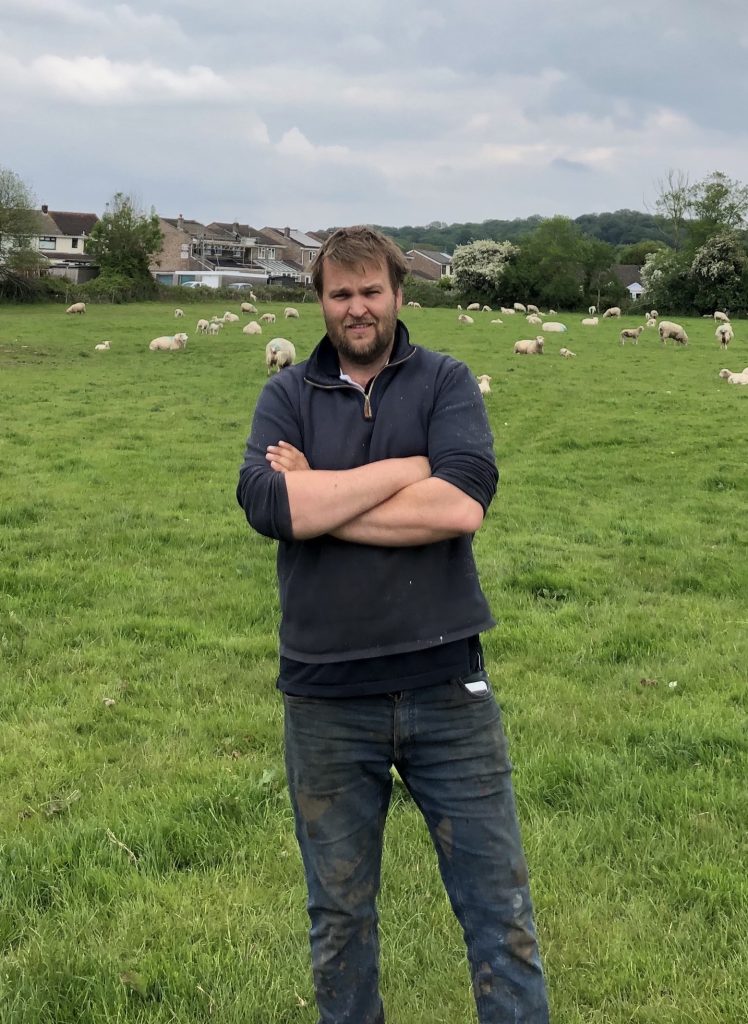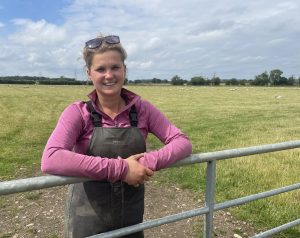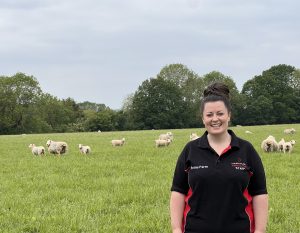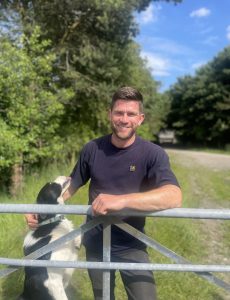Olly and Edward Matthews, Yatton, North Somerset
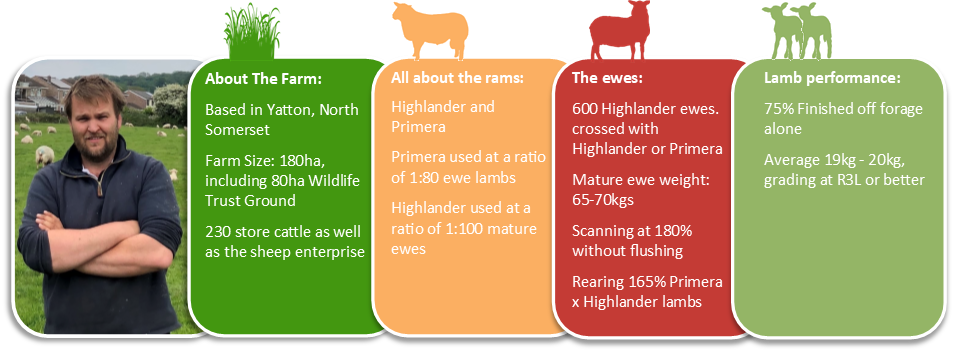
The Matthews brothers say the future of their 600-ewe enterprise is focused on maximising output from a sustainable, low cost regenerative system. “We believe in farming efficiently; we work with nature,” Olly explains.
Introducing rotational grazing combined with Innovis genetics is helping the brothers to step up output from homegrown resources whilst maintaining soil health and fertility, he says. “We’ve had a major refocus. During the last three years, we’ve swapped our traditional damline breed and Continental terminal sire for the Highlander and Primera.
Olly lists the main drivers for change
- developing a complete forage based system featuring rotation grazing.
- finishing the entire lamb crop off grass at 19kg – 20kg.
- moving from lambing indoors to outdoors and successfully reducing labour, from two to one part time person.
- stocking a ewe with a lighter mature body weight – an average 65kg – 70kg, compared with traditional breed ewes averaging 85kg – 95kg.
- managing a hardier ewe, able to winter outdoors off grass.
- developing a closed flock and breeding own replacements.
Both Olly and Edward were inspired to make the changes towards a regenerative system following visits to New Zealand where they found ewes lambing themselves outdoors and weaning 1.5 lambs off pure grass based systems.
On returning to the UK, he says further investigation led them to find the Highlander seemed to tick all the boxes to thrive in a low input, low cost system, and that’s proved to be the case. “Quite simply, the Highlander is more efficient – she eats less, but produces the same number of lambs enabling us to increase stocking rate by 10%.
“Since we’ve now established our main ewe flock, we plan to cross some ewes to terminal sire from next year, however we already crossing our Highlander ewe lambs to the Primera meat sire which has a smaller head and narrower shoulders making for much easier outdoor lambing; we’ve more live lambs because they’ve a better wool cover.”
Olly continues: “We overwinter the Highlander ewes on grass in mobs of 100 to 200, moving them on every two to three days; we find they hold their condition really well. Going forward, we want to improve the grassland, introduce more clover so we’re able to finish 100% of the lambs off forage. And we want to rotationally graze wherever we can; we’ll be able to grow more grass and maintain the flock more efficiently.”
